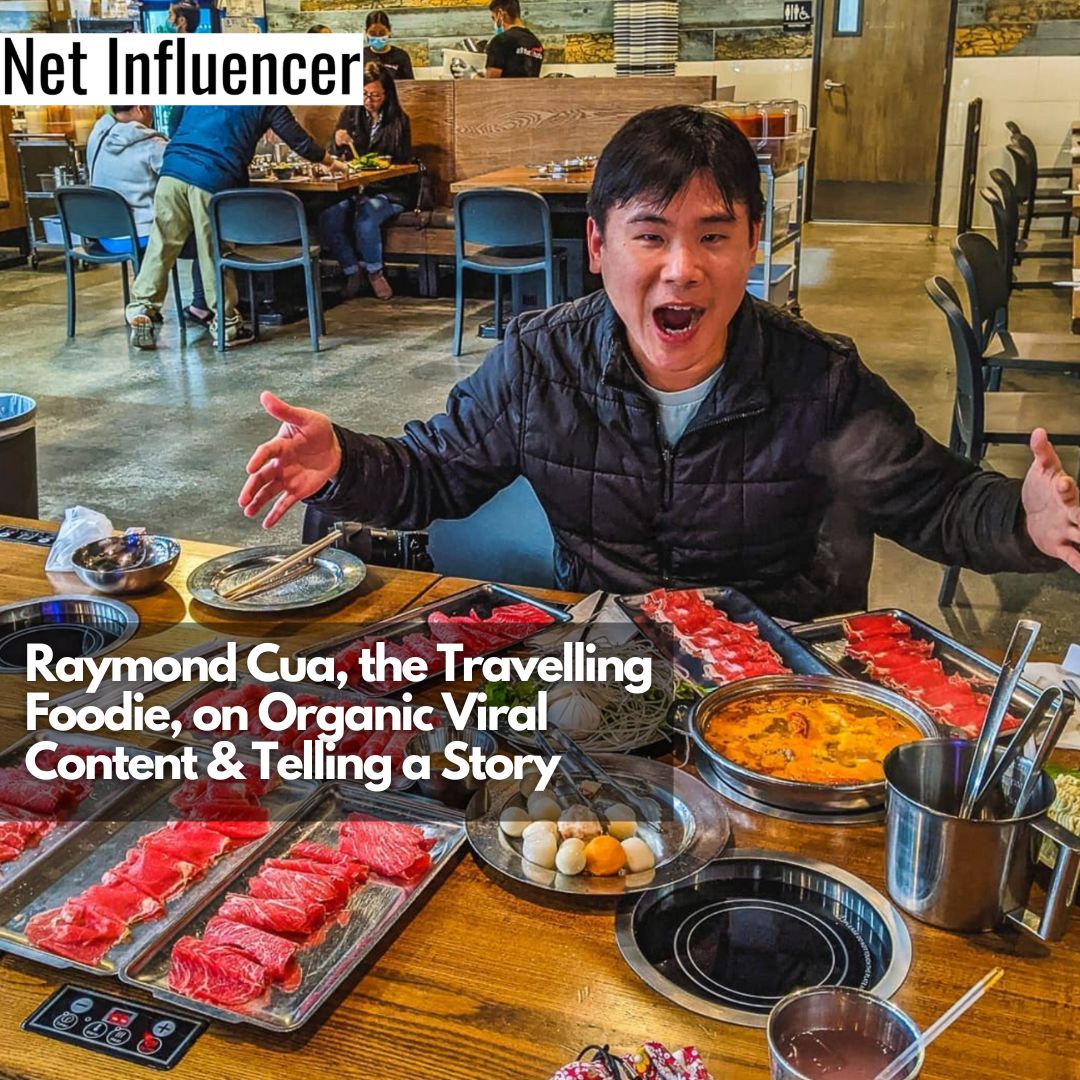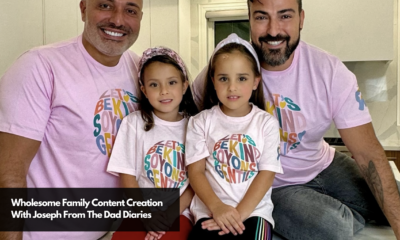Influencer
Raymond Cua, the Travelling Foodie, on Organic Viral Content & Telling a Story
Is the secret to viral content on Instagram perfectly curated content or an organic, spontaneous story that creates interest in the culinary experiences? Raymond Cua, the Travelling Foodie, shares his experience building his foodie Instagram and telling stories through his content.
Who is Raymond Cua?
Raymond Cua is a full-time blogger, writer, photographer, content creator, and founder of the Travelling Foodie. However, he didn’t start off in this industry. Raymond has a background in computer science and worked in software development when he started blogging, which launched him into his current career.
“I’ve always loved taking pictures wherever I go. I found it as a way to document my experience, remember what they had, and where I went, stuff like that.”
Raymond notes that his friends and family would ask him frequently for his food recommendations. So, he decided to stop sharing his experiences solely on his private Facebook account and start the Travelling Foodie, where he documents his food reviews and experiences.
His love for food and travel began as a child.
Raymond was raised in the Phillippines and was exposed to travel from a young age because his family would travel yearly. Their trips would have always have a culinary focus because his parents owned a restaurant and would make sure to incorporate plenty of native cuisine during their travels.
“Chinese culture and Filippino culture center heavily around food, so we always integrate that. That’s part of our travel… You need culinary experiences as well… I find destinations [with] something very special to showcase, normally, with their food.”
Raymond shares that culinary experiences are an important part of travel for him. He notes that he doesn’t only focus on high-end dining on his account, but he posts a large variety of foods, from junk food to fine dining to foods that aren’t considered “photogenic.”
“If it’s something unique to your cuisine. If it’s something that tells a story, even though it may not be photogenic. I don’t mind [posting about it].”
He also frequently speaks with restaurants and asks to see the behind-the-scenes process of how they create their star dishes so that he can see the work put into every dish.
Raymond’s Viral Foodstagram Posts
Raymond shares that his most viral food video to date is the inaugural opening event of Jollibee in Toronto. During the event, the mascot came out with a giant bucket of fried chicken, which caught many of his followers’ attention, along with news outlets due to the unique visuals.
Collectively, he had around a hundred million views on this post.
Another massively successful post for him was a tourism video sharing a popular lobster dinner in Nova Scotia. The restaurant he filmed allows you to watch the entire lobster preparation process, from choosing the lobster you want to eat, how you want the lobster cooked, watching the steaming process, and much more.
For this video, he was working with Nova Scotia tourism. Raymond specifically asked the restaurant for filming access so that he could document the entire experience for his followers.
Raymond’s Viral Content Strategy
When asked about his viral content strategy, Raymond notes, “A lot of my content and social media is organic, so a lot of the times there are viral content that I just don’t get, [it’s] random… It wasn’t that I was working with a client or anything. I went to a destination on my own.”
He shares that standing out on food Instagram can be tricky, and you need to have your own voice to stand out against the crowd.
Originality is also key. Often, food influencers may be invited to a restaurant in a group, which can result in similar content being published on many food accounts simultaneously. This can be boring to their followers.
“I don’t want people to see the same thing, and I want to go there when things have died down so that I can have an authentic experience… instead of being like one of the many influencers that share the same thing during that time.”
Working with Brands
“One of the ways I can do this full-time is because I partner with brands. I partner with destinations and even some restaurants that I already personally enjoy, so aside from other income streams like ad revenue from blogging and YouTube videos, I also do sponsored content with brands.”
Raymond shares that his most successful content to date has been with Nova Scotia Tourism. He shares that he thinks the content resonates well with his followers. Nova Scotia Tourism also doesn’t have strict content requirements. Which allows him to create the best content possible.
“The goal is basically to showcase culinary [experiences] in Nova Scotia… They have a strong focus on promoting their culinary scene because they are huge in seafood and lobsters, which is perfect for me as well… Nova Scotia is one of the few partners I’ve worked with that really has a strong focus on culinary [experiences].”
Raymond notes that he enjoys the freedom Nova Scotia Tourism gives him when they work together. Ultimately, he shares with them what places he plans on going to during the trip, but he also has ample free time to explore without an agenda. He also enjoys meeting with locals and hearing their recommendations.
After the campaign is done, Raymond will share his metrics with the brand, such as likes, engagement, and extra coverage that wasn’t expected.
For example, he has published blog posts and had them picked up by local news stations, which gave his content a massive boost in reach.
Final Thoughts & Future Plans
In conclusion, Raymond notes a few trends that he sees for the future of influencer marketing.
Raymond shares, “More and more people, in general, are seeing the value of being an influencer or content creator.”
He notes that more people turned to entrepreneurship during the pandemic and learned to create their own content.
“Nowadays, there are so many ways to build an audience out of it, so that’s one way, which is great.”
More people follow influencers than traditional celebrities nowadays, and younger generations are even less inclined to notice standard ads, so video and social media content will continue to be critical for brands.
Raymond shares that he is a little sad to see the strong shift towards video content because there are so many amazing photographers out there. He notes that photos are still very important, but photography can be limiting since you can’t post it on TikTok or YouTube, which are trending heavily.
However, he believes Instagram will still be a crucial part of influencer marketing which is where photographers really shine.
“Luckily for me, how I want to tell my story, I feel like there’s more story to be told when you show it through videos than just one picture, and that’s why it has worked really well for me.”
In terms of future plans, Raymond notes that he is excited to travel more and has a lot of travel plans in the works now that traveling is opening up more.



















